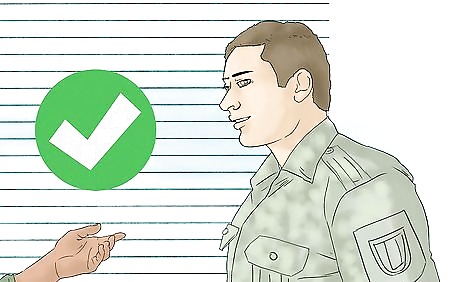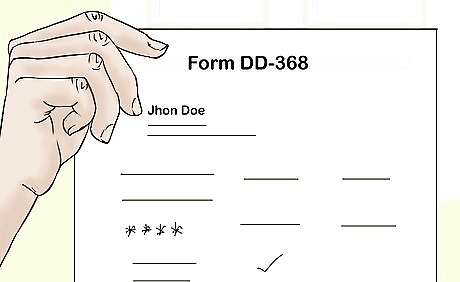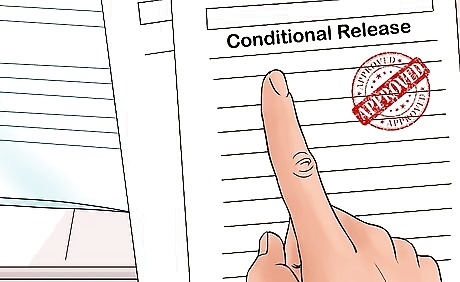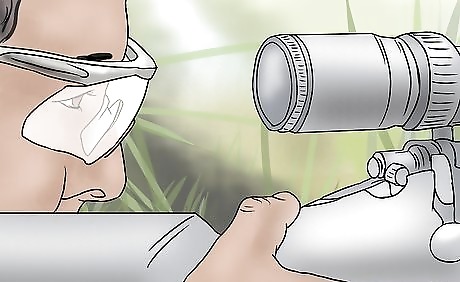
views
Determining Eligibility

Contact a local Army recruiter. If you are interested in moving from the reserves to active duty, the first person you should talk to is a recruiter. They can assess your eligibility for special programs and help you to decide what direction you would like to go in while on active duty. Since you are already in the reserves, you will likely fulfill all the general requirements for entering the military, such as being between the ages of 17 and 35, having a high school diploma, and being a citizen.

Review the prior service business rules with your recruiter. These rules limit the number of military members that can reenlist after a term of service. These numbers are determined by the member's work specialty, called the military occupational specialty (MOS), and current vacancies in positions and training programs. Whether or not the prior service business rules apply to you depends on how much reserve training you have done and if you've had break in service. Talk to your recruiter about exceptions to the prior business service rules. For instance, being considered a new enlistment instead of a reenlistment could mean you are eligible for signing bonuses and other perks.

Determine if there are openings in your active duty unit. In order to move from reserve to active duty, there has to be an open position for you to move into. If there is not an opening for your military occupational specialty at your pay grade, then the request may be denied. Talk to your recruiter about where you might fit when moving to active duty. When moving from reserves to active duty, you can also request to receive training in a new specialty. However, there has to be space in the training program for you to be accepted and for your transfer to be approved.
Selecting a Position

Discuss whether you qualify for the Call to Active Duty Program. There are some special programs that will make transferring to active duty more beneficial to a reserve member. One of these is the Call to Active Duty Program, which assesses the skills and training of exceptional reserve members and allows those that have performed exceptionally in the reserves to choose their specialty training when entering active duty. This is a program specifically for commissioned, warrant, and non-commissioned officers. Discuss this program with your recruiter if you think you might qualify for it.

Consider joining the active guard reserve program. If you would like to work for the army full time but in the reserve system, you can apply to the active guard reserve program. This program allows you to serve full time, get the benefits associated with active duty, and be stationed in the United States while serving your tour. Like other branches of the army, the active guard reserve program has ample opportunities for training and development. If your goal is to rise in the ranks, it can be done in this program.

Take your skills into consideration. When attempting to move from reserves to active duty, you may want to consider how your specialized training will impact your position in the army. Those in the reserves who have received specialized training and have a good record are more likely to be allowed to transfer to active duty than those with no specialized training.

Get the support of your chain of command. Once you have determined what active duty position you would like to pursue, talk to your direct supervisor about your plans. You will need to have your first general level officer sign off on the transition, so it's important to have a good report with them and explain clearly why you want to become an active duty member. Begin the conversation by asking your supervisor if you could schedule a time to talk to them privately. When you do have this meeting, state clearly "I want to transfer to active duty." Then give them specific examples of how your time in the reserves has led you to this decision. Also tell them how your long term goals can be served by this transition. Keep in mind, it may be that you are needed in your reserve unit and your commander will not approve the transfer.
Getting Your Transfer Approved

Complete and submit form DD-368. To get a conditional release from your reserve contract you will need to submit form DD-368, which your recruiter has. Your recruiter will submit the form but you will need to supply them with any information they need to fill it out, including your full name and address. You will also need to sign the form to attest that you do want this new enlistment.

Get a conditional release from your reserve unit. Once the DD-368 form is submitted by your recruiter, it is sent to your unit commander or designated representative. They will have 30 days to fill out their section and approve or disapprove the request. If they approve of the request, the form will be sent to the enlisting and appointing official for final approval. If the recruiter doesn't hear back in 30 days, they will need to contact your unit commander or designated representative. If the request is not approved, you will be required to continue your service in the reserves.

Complete your final paperwork, including taking your oath of enlistment. Once your transfer has been approved, you still need to take an oath of enlistment. The paperwork will also include information about your new enlistment period and where you will be serving as an active duty member. A copy of the final paperwork and oath of enlistment or appointment will be sent to your home address.

Begin your active duty training when directed to do so. Your official paperwork will include information about when your active duty begins and where you will do your training. You will need to continue doing required drills and exercises with your reserve unit until you officially begin your active duty enlistment.




















Comments
0 comment